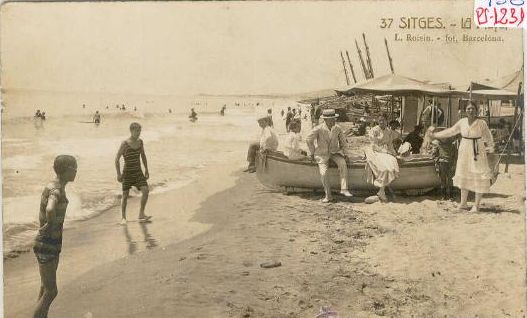
Sitges beach scene. In the mid ground - boards can be seen in the water.
 Sitges beach scene. In the mid ground - boards can be seen in the water. |
On the Mediterranean Coast, boatbuilders and carpenters from Valencia made planquin, based on boards from Cantabria. The story of Nacho's plywood paipo board from Gandia, 1970. The story of Paco's wooden boats from Bellreguard, around 1980. The tradition of making and riding wooden boards, ridden prone has been continued by Salva, from MedSwells
 Medswell boards, left to right: 5' rountail; 4' paipo, thin giving more flex; 4' squash tail - a thicker board with the two holes near the tail to screw a central fin and two small holes on the left rail to screw 1-2 " small keel/fins to give more grab on hollow / more vertical rides. 3'5" fish tail. Photo by MedSwells.
Medswell boards, left to right: 5' rountail; 4' paipo, thin giving more flex; 4' squash tail - a thicker board with the two holes near the tail to screw a central fin and two small holes on the left rail to screw 1-2 " small keel/fins to give more grab on hollow / more vertical rides. 3'5" fish tail. Photo by MedSwells.
|
||
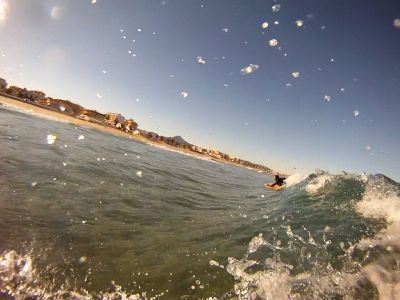
Mediterannean takeoff, Valencia December 2018 | 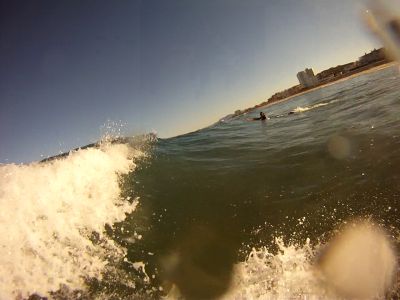
Kicking out |
|
<
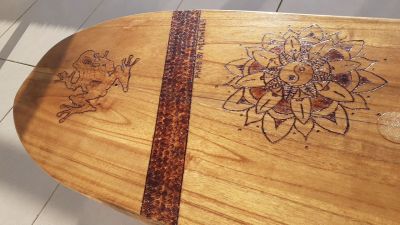 Granota model nose closeup. /p> |
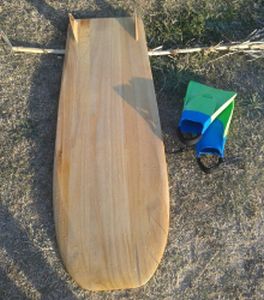 Granota model. |

|
In addiiton to solid wood consytuction, MedSwells has made a cork based eco-board, the LordCork4: 52 3/4" x 24" x 2 1/2" (60L) 2kg build on cork and wood without resin or fibreglass. This style departs from the classic thin and neutral buoyancy of paipos, and instead goes to maximize volume with a low weight. The name LordCork4 is modelled after a Ryan Burch Lord board (based on Lindsay Lord's 1954 book, Naval Architecture of Planing Hulls). Lord's book was also influential on the US shaper, Bob Simmons. Med Swells has has shaped a hollow Mini-Simmons 4'9" surf board named "La Bonita", which has been ridden prone and as a kneeboard.
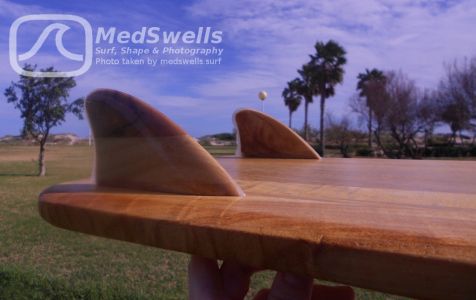 Twin fin close-up. Photo by MedSwells
Twin fin close-up. Photo by MedSwells
|
 Cork bodyboard style board.
Cork bodyboard style board.
|
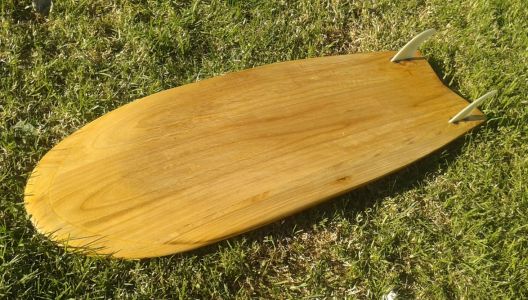
LA Bonita Mini-Simmons |
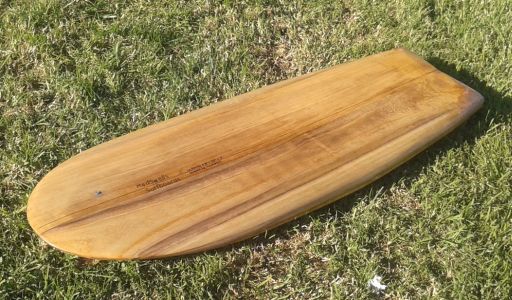
LA Bonita Mini-Simmons |

La Bonita rocker |